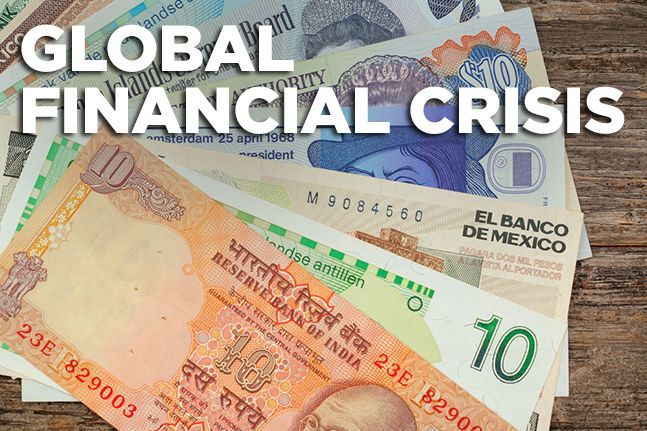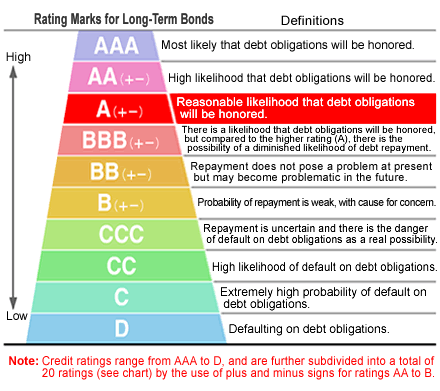Causes of the GFC and how it unfolded
Summary
- Post 2000, US financial institutions had a lot of money to lend to willing borrowers.
- US financial institutions gave money to willing borrowers for a house loan, then actively sought-after people to borrow from them, who at the time could not repay the borrowed funds.
- In 2006, borrowers on home loans began defaulting on their loans due to a spike in their interest rate on the loan. This lead to a rapid oversupply of houses in the market.
- The financial package that contained these debts were next to worthless, and companies began defaulting. Since investors did not know who had these bad debts due to a lack of regulation, oversight and transparency, no one was willing to lend to one another.
- The US government stepped in to fix the problem and provide better regulation, oversight and transparency to prevent another unnecessary financial crash and give investor confidence to lend to one another.

Source: Carnegie Council of Ethics and Affairs 2009
Introduction
The GFC was considered the greatest market crash since the great depression. This blog will be discussing pre-GFC before 2006, pre-GFC between 2006 and 2007, the effect of the GFC in 2007 and the government response to the GFC.
Pre-GFC before 2006
- US financial institutions went through a tough time where a lot of businesses and investors were defaulting on their loans during the dot-com bubble.
- To stimulate the economy, the Chair of the United States (US) Reserve Bank Alan Greenspan, lowered interest rates to 1%. Along with other countries such as Saudi Arabia and China investing their surplus' into the US, there was now a lot of money now in the US for people to use.
- Given interest rates were at 1%, it was not profitable for financial institutions to buy T-bonds (Treasury bonds) from the US Reserve Bank, because they could loan the money to others at a much higher interest rate, and thus a better return on their lent money.
- US Financial Institutions turned to household loans to make revenue and find people to loan money to.
- US Financial Institutions offered a borrower a house loan to buy a house. This person would pay almost/or 0% interest on the loan. However, after a certain period (for example three years), the interest rate of that loan would suddenly increase to a high value (for example from 0% to 5%).
- US Financial Institutions were signing up anyone who wanted a household loan. However, there was a shortage of people demanding home loans, and the US Financial Institutions actively sought out new borrowers who would take up these loans
- US Financial Institutions did not check properly, whether these new borrowers had the ability to pay back the loan in the different interest rate periods of the loan (for example, if the borrower could pay when the loan would go from 0% to 5%).
- These new borrowers the US Financial Institutions were seeking out were often poor people that could not pay off a loan, or had a decent income to support a loan. The home loans given to these people were called subprime mortgage. This was not known at the time to most global financial institutions, or they chose to ignore it due to the AAA rating of the financial package (the AAA rating is explained in the dot point after the next).
- The US Financial Institutions would then select a few thousand of these borrower's loans and sell them off as one big financial package to other financial institutions, such as pension funds, superannuation funds and other banks.
- Credit raters in the industry would rate all different sorts of financial packages according to a rating system. This system is where the safest credit ratings would be rated AAA, and the non-safest ratings would be labelled D. A diagram of the rating system is shown in Figure 1 below.
Figure 1

Source: Delonix, n.d.
- The three main credit raters of these big financial packages were Standard & Poor's (S&P), Moody's and Fitch Ratings.
- These credit raters rated all these financial packages called Collateralize Debt Obligation (we will use the term financial package for this example) that were sold as AAA, meaning they were categorised as the safest type of financial package to buy.
- These financial packages were trading between multiple financial institutions within the US.
- Eventually, US Financial Institutions would sell these financial packages to overseas financial institutions such as Icelandic banks, UK banks and other financial institutions. This essentially means that a foreign financial institution owns these loans that have been given to citizens of the US to by a house.
- US Financial Institutions believed that even if people defaulted on these loans, property values would always increase and not decrease, due to the constant increases in population growth and demand for closer housing to urban areas.
- This kept going until 2006, and the amount of debt held by US financial industries was $36 trillion dollars in 2006, up from $18b in 2002.
Pre-GFC between 2006 and 2007
- This came to a head in 2006 when the high interest period hit. People who bought a house but were unable to pay the interest defaulted on these loans.
- In the United States, when a borrower defaults on their home loan, they do not have to pay the amount they were loaned (i.e. the principal) back. They can just give the house that was bought with the home loan to the bank.
- Home loan repayments jumped to 5%, up from around 0% around 2006. When this happened, many people who had these types of loans could not make the repayments. Therefore, they defaulted on their home loan.
- Because of this, the financial packages originally sold by US Financial Institutions were found not to be AAA (i.e. trustworthy), because they have given money to borrowers that could not pay the money back.
- These financial packages essentially became bad debts (i.e. that cannot be repaid near their original value).
- Although financial institutions around the world got these properties, these properties decreased in value due to the increase in supply of houses. House supply increased due to people defaulting on their loan and giving the house back to the financial institutions to sell.
- So now you have an environment, where many people have defaulted on their home loans, and given back their house, that has decreased in price, due to a massive increase in supply, over a brief period.
- Other home owners that originally demanded home loans, and were in an appropriate position to pay off their home loans, also defaulted. They defaulted because they did not see why they should pay back a home loan on a house, when the home loan was now worth (starting in 2006) three times the value of the original house's price. All they had to do was give back the house to be free of the relatively large home loan debt that they needed to pay in comparison to what the value of the house was.
- A lot of financial institutions now had this financial package that was worth far less than they paid for. They could not sell it to another financial institution due to it being worth much less than it was bought for, and still decreasing in value (due to housing price decreasing because of oversupply of houses in a very short-time span).
- Due to these assets being worth so little than these financial institutions paid for, many financial institutions now have a lot more debt than their revenue can cover, and go bankrupt. This is where the GFC officially starts with the collapse of the first bank, Lehman Brothers, in 2007.
The effect of the GFC in 2007
- The collapse of Lehman Brothers was the first big major financial institution that defaulted due to these bad financial packages.
- Because no one knew how bad these debts where, or who had these debts, financial institutions stopped lending to each other. The credit market in the US came to a standstill.
- No one was willing to trade their money in case the person they lent it to defaulted. This also occurred around the globe, as international financial institutions also bought these financial packages.
Government Response to the GFC
- As a result, certain governments acted to limit the damage caused.
- Originally, US government regulation was not sound enough within the financial industry, and the government believed.
- The US Reserve Bank offered emergency loans to certain banks prevent banks who did not have these bad debts from collapsing.
- The US government further investigated US financial institutions to decide which ones had bad debts and which ones did not.
- This was designed, and had the effect, of reducing the panic by investors and gave some certainty of who was trustworthy and who was not so much.
- An inquiry into the GFC was set up by the US Government, and determined the GFC was unavoidable due to the lack of regulation on US Financial Institutions.
- US Financial Institutions got too greedy and borrowed too much money to make a profit on, and bonus in these institutions were set up where the more people they loaned to, the more their bonus would be. This means that the risk of these financial packages was not assessed, and people just continued to find people to borrow their money without looking at the risk of the asset they were selling to the borrower.
- Regulations, transparency and oversight by the US Reserve, US government and US financial institutions have been improved. Whether this is enough to prevents unnecessary crashes of the US market, remains to be seen.
Sources
CFR.org Staff 2015, 'The Credit Rating Controversy', Council on Foreign Relations, retrieved 1 July 2017, https://www.cfr.org/backgrounder/credit-rating-controversy.
Carnegie Council for Ethics in International Affairs 2009, 'Global Financial Crisis: Primary Sources', Carnegie Council for Ethics in International Affairs, retrieved 1 July 2017, https://www.carnegiecouncil.org/education/009/002.
Delonix K, n.d., 'Simple Ways to Boost Your Credit Rating', Mr. Hoffman's Blog, retrieved 1 July 2017, http://www.hoffman-info.com/business/finance/simple-ways-to-boost-your-credit-rating/.
Financial Crisis Inquiry Commission, ‘The Financial Crisis Inquiry Report’, United States of America, retrieved 1 July 2017, https://www.gpo.gov/fdsys/pkg/GPO-FCIC/pdf/GPO-FCIC.pdf.
Federal Reserve Bank of St. Louis 2017, 'Households and Nonprofit Organizations; Credit Market Instruments; Liability, Level', Federal Reserve Bank of St. Louis, retrieved 1 July 2017, https://fred.stlouisfed.org/series/CMDEBT.
Positive Money n.d., ‘Financial Crisis & Recession’, Positive Money, retrieved 1 July 2017, http://positivemoney.org/issues/recessions-crisis/.
White, L 2009, "A BRIEF HISTORY OF CREDIT RATING AGENCIES: How Financial Regulation Entrenched this Industry's Role in the Subprime Mortgage Debacle of 2007 - 2008', Marcatus Center, retrieved 1 July 2017, https://www.mercatus.org/system/files/59_CRA_history_%28web%29.pdf.